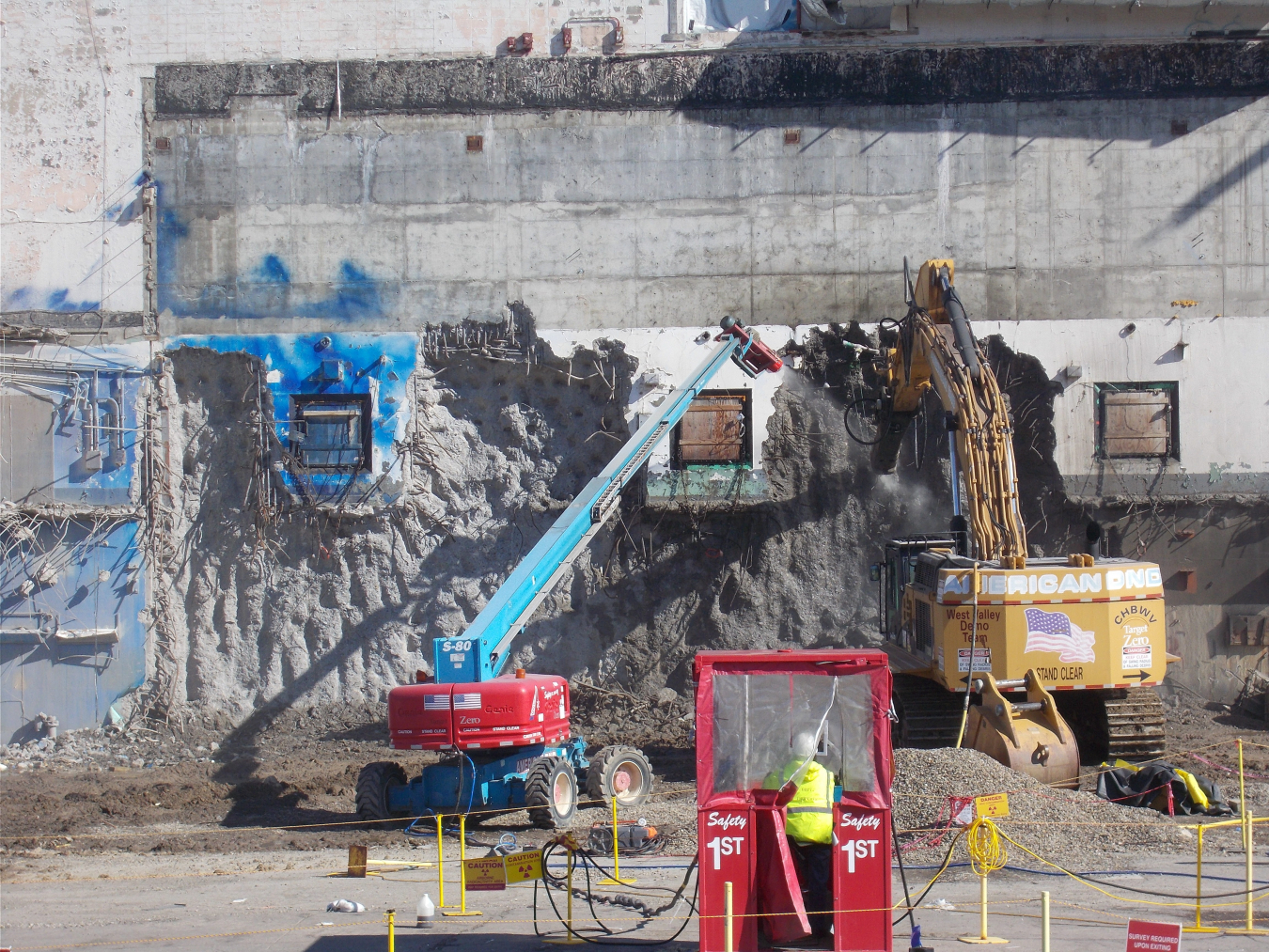
Workers take down a portion of a 5-foot-thick concrete wall of the Chemical Process Cell on the west side of the Main Plant Process Building at the West Valley Demonstration Project. The controlled demolition began in September.
WEST VALLEY, N.Y. – EM and its cleanup contractor at the West Valley Demonstration Project have safely completed demolition of seven areas of the Main Plant Process Building after launching the project early last fall.
Crews with CH2M HILL BWXT West Valley (CHBWV) have torn down a chemical extraction room, three extraction cells and other portions of the facility in compliance with local, state and federal regulations.
EM began the controlled demolition project on Sept. 21, fulfilling an EM 2022 priority. West Valley crews are now working toward carrying out an EM 2023 priority: dispose of 9,000 tons of Main Plant demolition waste.
EM officials attributed the successful demolition progress to extensive planning and preparation, an experienced workforce and their adherence to lessons learned.
“Safety comes down to planning and preparation for any work, big or small,” EM West Valley Main Plant Project Director Stephen Bousquet said. “We have deployed extensive measures, robust work controls and best practices into this project to ensure the safety of the workforce, community and surrounding environment.
Planning for the project began in 2014 with a multidisciplinary team that arranged the Main Plant into distinct areas to help determine radiological contamination levels and assess hazards. The team identified over 80 areas to be reviewed for size, history, known contamination levels, structural integrity and other factors that could affect the demolition.
Team members evaluated those areas of the Main Plant and verified their conditions. CHBWV’s radiation engineering group performed calculations to determine the rate and sequence the plant could be safely and compliantly demolished. Workers removed pipes, vessels and equipment. They also decontaminated, painted and sealed rooms as required.
Employees identified more than 120 items that needed to be removed under special instructions to control potential contamination at its source. Special containers for such items were designed, manufactured and shipped to the site.
“The deconstruction is going well, and our controls continue to keep contamination at its source,” CHBWV Facility Disposition Manager Tom Dogal said. “This result is the combination of teamwork and communication that helped create a comprehensive and unified plan to safely take down the Main Plant.”
Dogal added that he values the continuous feedback from employees to further enhance processes, procedures and work instruction packages for improved safety and productivity.
The Main Plant is one of the last remaining major facilities at West Valley. Its successful demolition will further reduce environmental risks and position the site for the next phase in cleanup. The demolition is expected to take approximately 30 months to complete.
The five-story, 35,100-square-foot, reinforced-concrete structure operated as a commercial reprocessing facility to recover reusable plutonium and uranium from spent nuclear reactor fuel. It ceased operations in 1972.
To receive the latest news and updates about the Office of Environmental Management, submit your e-mail address.
